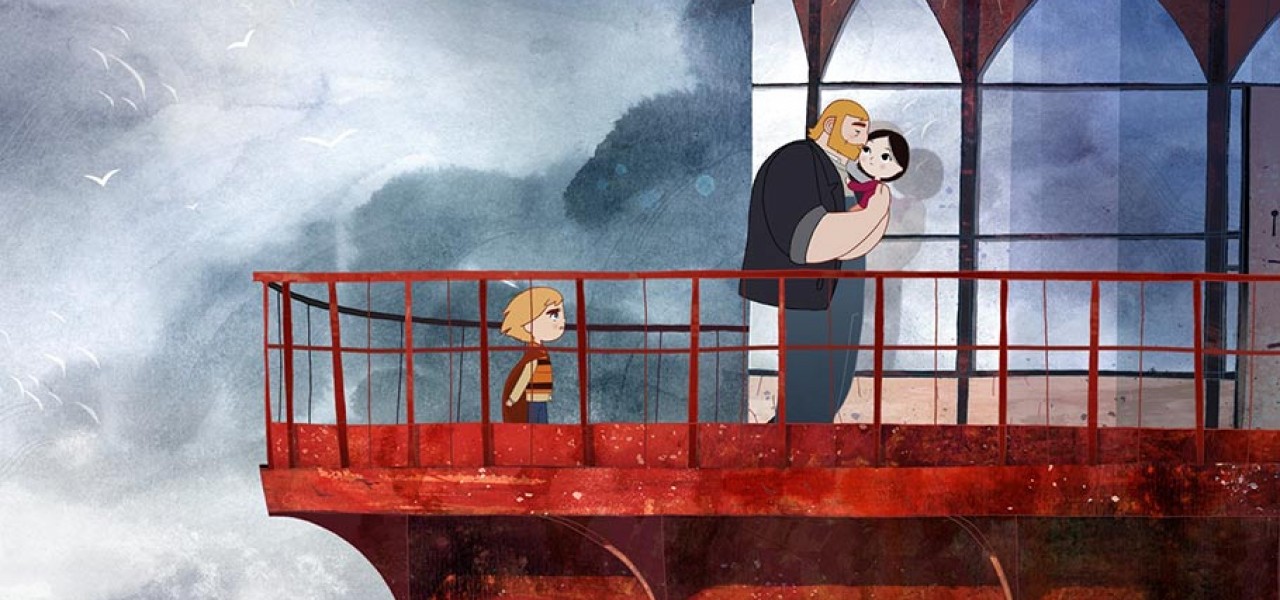
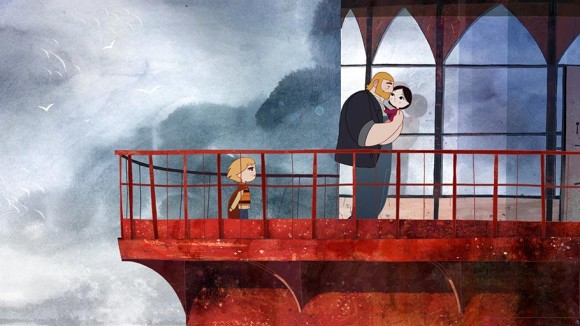
Oscar Ballot Guide: ‘Song of the Sea’ Acting and Performance Analysis

Part four of a five-part series in which Ed Hooks, author of Acting for Animators, does an acting and performance analysis of this year’s five Academy Award-nominated animated features.
Read his analyses of:
The Tale of The Princess Kaguya
How to Train Your Dragon 2
The Boxtrolls
When my daughter was a little girl, I used to let her watch my acting classes. I discovered that she was a kind of miner’s canary when it came to detecting strong performance. Being a child, she could not understand much of the adult subject matter in the scenes she was watching, but it didn’t matter. When the actors on stage were “in the moment,” playing off of one another, when what they were doing was “theatrically valid”—playing actions in pursuit of objectives while overcoming obstacles—she watched with close attention. It wasn’t necessary for her to grasp all of the psychological and philosophical implications in order to enjoy what she was seeing; there was something very basic and primal happening.
When the actors lost focus, when they stopped listening to each other, when they were reciting monologues rather than communicating thoughts with them, I would glance over and, inevitably, her legs would be swinging gently under her seat, and her eyes were roaming. Her reactions were enlightening to me because, as a matter of human survival, evolution has hard-wired us to resolve conflict. When conflict is present, it rivets us. When it is not, our minds float. Children are more honest about it, that’s all.
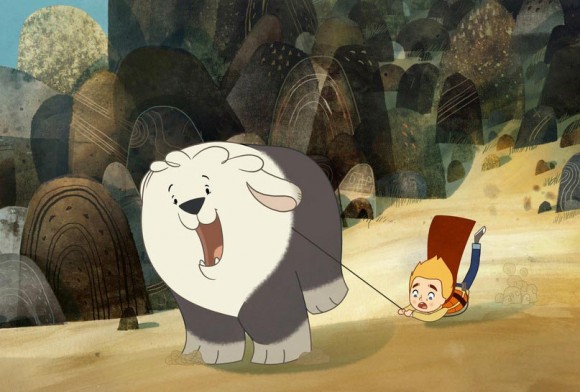
This has been on my mind while analyzing Song of the Sea because, as beautiful as it is to watch, the movie does not always hold my attention. I realize that is a terrible thing to say about an Oscar nominated film, but it is true. There have been times during each of my viewings of the film when I had to conceptually focus on the action either because a sequence lacked conflict or because the character was in a parallel reality, not in charge of her own actions. It sometimes felt to me a little like the cinematic equivalent of a Buddhist Sand Mandala.
We are drawn to movies because they give us an opportunity to safely watch humans (or their anthropomorphic stand-ins) confront life situations in real time. When we watch a movie, we want to empathize with the characters on screen, to passively monitor their values and check them against our own. The cinematic aesthetic experience is altogether different from what happens when we read a good novel—or listen to someone tell an Irish folk tale—which also requires empathy. In a movie, we are there during the literal on-screen doing—right now, in the present moment. The filmmaker defines the visual reality, take it or leave it. By contrast, if you and I are listening to somebody tell us a story around the campfire, your reality is going to be different than mine because it is all a factor of our respective imaginations.
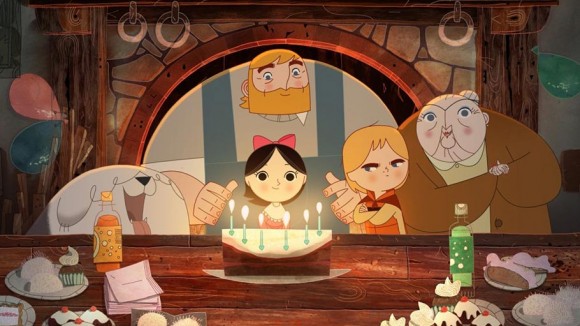
Song of the Sea feels to me like it needs a campfire, the freeing up of the listener’s imagination. What we have instead is Tomm Moore’s imagination at work, his and that of co-writer Will Collins and the rest of the crew. These fellows are definitely good company, but the characters and situations in the story flow and flux. Grandmother is grandmother except when she is the owl-witch woman. Seals are seals except when they aren’t. The sea will down a person except when it doesn’t.
In a movie, we may not agree with a character’s choices, but we want to walk in his or her shoes empathetically. When we are robbed of the empathy option, we simply lose interest in the movie. That, in a nutshell, is what bothers me about Song of the Sea. It is hard to analyze acting when it is so difficult to separate reality from fantasy.
Given that proviso, there are some strong sequences in the film, scenes that work powerfully in the acting department. They are too spread out, and there are not enough of them, but we can examine them anyway. I enjoyed the brother-sister exchange at 11:53 (timecode of the screener DVD) when Ben reads a bedtime story to 6-year old Saoirse, but instead of trying to settle her in for the night, his true objective is to frighten her. She is too innocent and trusting to understand the duplicity, and so Ben successfully achieves his objective, causing her to cower under the bed covers. Then, feeling guilty that he has gone too far, he immediately tries unsuccessfully to pacify her. It is a small moment but is theatrically valid and insightful about brother-sister relationships. In acting, you pursue an objective until you either achieve it or until another objective takes its place. Ben’s objective changes while we watch, which is acting fun. The scene lets us see his personal values.

At 19:50 the ten-year old boy named Ben discovers his deceased mother’s seal skin coat in a locked bedroom trunk. This upsets his clinically depressed father, Conor, quite a lot. He snatches the coat from the boy’s hands, stuffs it back into the trunk, re-locks the trunk and throws it into the ocean. All right! Something is happening now! Dad has an objective, namely to make certain the boy never again fools with the coat. He evidently has conflict with his situation. It is not clear precisely why he has such an extreme reaction, but I don’t care. Acting is happening, and it is emotion-driven.
Most of the good stuff, acting-wise, happens during the second half of the film, when Ben is the obvious protagonist and is doing battle with the grandmother figure, Macha. His objective is clear: to reunite Saoirse with her sealskin so that she can sing her special Selkie song. And he wants to get Saoirse, his pet sheepdog and himself back in their lighthouse home where they will be reunited with their dad. Pursuing that objective causes them to cross paths with an assortment of fantastical characters that may or may not be present in the real world.
At 47:05, all heck breaks loose when Saoirse jumps into a well. (This child simply cannot stay away from water and dangerous situations!) The dog starts barking and follows her into the well. Because Ben has tethered himself to the dog with a leash, he too is pulled into the well behind the dog. The three of them ought logically to drown but, instead, they fall down and down and down some more, which tells us that we are in never-never land somehow, Tomm Moore’s world.
They don’t die, and Ben eventually surfaces alone into an underground cavern. He climbs into a makeshift rowboat he conveniently discovers and starts paddling around desperately, searching for Saoirse and the dog. Little Tinkerbell-style fairy lights float around him, another signal that what is happening is not really happening. Then, Ben meets up with a crazy old guy with a long white beard. “I’m looking for my sister. I lost her down here,” Ben says, stating for us his provable objective. The old man gets into the boat, joining the adventure. Theatrically, we are in the present moment, even if we suspect that the entire affair is a fantasy, so it is satisfying acting-wise. Characters have personal values that are being expressed as emotions, and those emotions are leading to physical actions in pursuit of objectives.
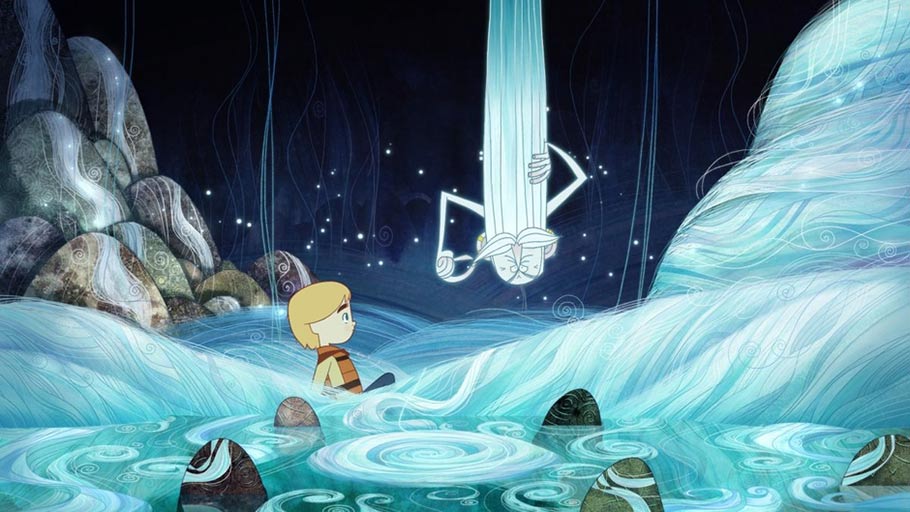
The grandmother in Song of the Sea is an interesting character because, Miyazaki-style, she morphs into different forms. Now she is good old irritable granny, and a moment later she is the evil owl-witch person. She clearly is pursuing objectives, although it is not always apparent what those objectives are. When she is in her most owl-ish form, she reminds me a lot of Zeniba, from Spirited Away. Check out the sequence at 1:21:36.
The fifteen minutes between 1:03:06 and 1:18:36 work extremely well in terms of acting because the story is chasing its resolution. Objectives are urgent. If you want to capture an audience’s attention, raise the stakes. Turn optional choices into life-or-death choices. That’s what happens in this section. Although we have a sense that everything will eventually turn out all right, there is a continual feeling that it could all go south, that Saoirse might end up with the seals, living happily ever after. There is a moment-to-moment reality in which each character is reacting spontaneously to unfolding events, many of which are legitimately surprising.
The part where Ben, with the help of the dog, gets owl-woman trapped in the cellar, is particularly effective. She wants out! She is playing her actions so powerfully that the big dog is bouncing up and down on top of the cellar door in reaction to her angry assault. There is a moment when Ben is desperate to make music with the conch shell, but music just won’t happen, and Saoirse is fading deeper and deeper into her spell-induced sleep. Another twenty seconds, and she would be dead, no doubt about it. High stakes inform the actions, and everything in this entire section is theatrically valid.
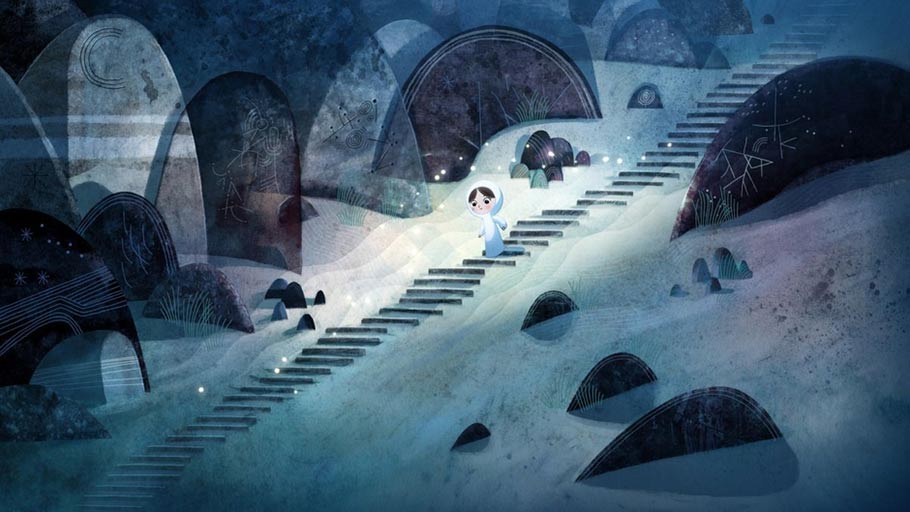
A scene is a negotiation. In any negotiation there is a way you can win and a way you can lose. During a lecture he gave at the Writers Guild in New York City some years ago, playwright David Mamet advised aspiring screenwriters that, if they could not identity the negotiation in a scene, they should trash it and write another scene because it was beyond fixable. Good advice.
At 1:23:07 in Song of the Sea, the mother comes back to life for one final negotiation with her family. The issue is whether Saoirse will return with her to the sea world of the Selkies, or will she remain in real-life with her brother and father. It can go either way, which is what makes the moment work acting-wise. Note how difficult the choice is for the mother. She loves her daughter and wants to have her in the Selkie world. The mother-child bond is arguably the strongest of any on earth. It would have been an easy acting choice to make the mother less conflicted. After all, in the folk tale, the transition is fairly straightforward. Fortunately for us, Tomm Moore and his actors keep us on edge until it is almost painful. Then Saoirse is separated from her seal coat and moves permanently into the real world while her mom returns to the sea.
Song of the Sea reportedly cost only €7 million to make, a pittance by Hollywood standards and, even given the points at which I had to focus conceptually, it is a very worthwhile movie. We need more of Tomm Moore, although I hope he is not personally buying into all these comparisons with Hayao Miyazaki. Mr. Moore is a fine filmmaker and storyteller, but Song of the Sea is only his second film. He is not yet a mature artist. I call this “a good start” rather than a celebration atop the summit, and I am looking forward to whatever he does next.
ED HOOKS is the author of Acting for Animators, (revised third edition, Routledge, 2011). Ed pioneered Acting for Animators in 1998 while working with the animators at PDI/DreamWorks in northern California, and teaches the Acting for Animators masterclass internationally. For Cartoon Brew, he previously wrote a performance analysis of Disney’s Frozen. For more information about his practice, visit EdHooks.com
